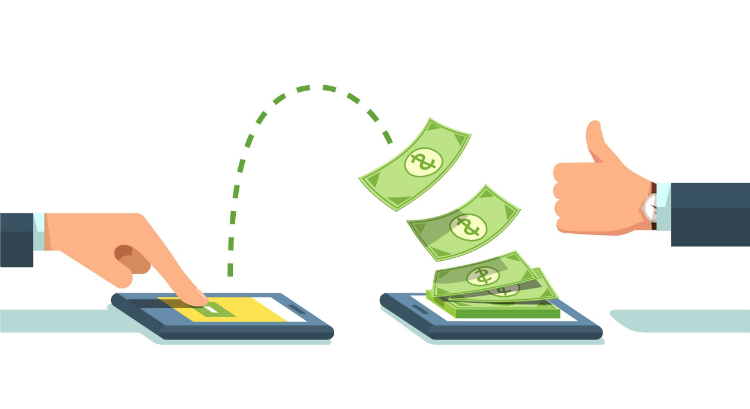Creating an app for your business should be considered an essential step in 2017. The main reason for this is simple: apps have the potential to earn you significant amounts of money. The prospect of using an app as an exciting new revenue stream for your business is doubtlessly enticing, but before you can do so you’ll have to ask one all-important question: how?
Most people are at least dimly aware of the monetization potential that apps have. However, very few are confident enough in the specifics of how apps actually earn money to describe it. As a result, the concept of creating a money-earning app for your business can often feel somewhat vague. What does an app have to do in order to be profitable, and what decisions will you have to make when creating it?
Some of you may already have apps for your business, but perhaps you aren’t seeing the kinds of returns you would like. In that case, it’s worth asking yourself certain questions about the way your app has been designed and whether or not there are changes you should make.
Whether you are making a business app for the first time or trying to tweak an app that your business already has, there are certain things you can do to ensure that it is as profitable as possible. Read on to learn how you can make more money from your app.
Deciding on Your Pricing Model
One of the first questions you will have to answer when you are developing or retooling an app is the way in which it will collect revenue. There are several common ways for apps to make money, and each of them will have pros and cons depending on your business. The four most common moneymaking strategies for apps are as follows
- Freemium
Freemium comes first on this list because it is (by far) the most popular monetization strategy for apps. That doesn’t necessarily mean it’s the best one for your business, but it’s still worth learning what freemium is and, more importantly, why it is so effective in many circumstances.
Freemium brings in 79% of all App Store revenue in the US, and even more in Asia. The reason for this is simple: freemium doesn’t cost anything… at first. Here’s the catch: the free version of the app doesn’t have everything. If you want premium features or bonus content, you have to pay extra—either by subscribing for a monthly fee or by making in-app purchases. You might think that this would annoy people, but it tends to have the opposite effect. If your app is enjoyable or addictive, you can use the freemium strategy to give them a “taste” and get them hooked so they’re willing to pay for the rest.
2. Free Apps with Advertisements
Another popular strategy amongst app developers is to make the app free to use at all times. How do they make money this way? They use ads. Any person using the app will see ads running at certain moments or in certain places. The way in which each advertisement makes money will differ depending on the form it takes and the network that runs it. The two most common options are to produce revenue based on impressions or click-throughs, although the exact amount may differ depending on factors like the home country of each user.
It is also worth noting that engagement with video ads tends to be worth more than that from banners and other static ads. Different kinds of video ads exist. Interstitial ads are some of the most popular and are more favorably regarded by users than ads that must be watched prior to engaging with content. An interstitial ad covers the entire screen during a natural transition point (such as the loading screen in a game). However, rewarded video ads are now becoming recognized as an even better option.
Rewarded video ads provide an incentive for viewers to make it all the way to the end of a video. In a game, the reward might take the form of an in-game item. In an app for a retail store, it could take the form of a discount code. In a B2B app, it might be a free ebook or report that you can download after watching. The point is, rewarded video ads give something valuable to the user in exchange for their attention. As a result, they provide better user experience and higher engagement levels, which means that they have much better monetization effectiveness.
3. Up-front Payments
Of course, the oldest way to make money from your apps is to simply sell them. Attach a price tag to your app so that anyone who wants to use it has to pay a few dollars up front. Some people find this strategy a little quaint and complain that it will not produce passive income. Passive or residual income is money that you collect even when you are not actively working for it, so critics of up-front payments are correct—under this model, you only make money from the initial sale, not from continued use. However, it is important to remember one in four apps are abandoned after a single use. If you can create an app that people use consistently, then using one of the two models listed above may produce a steady stream of revenue. However, if your app is likely to be discarded or ignored after just a few uses, it’s often better to collect what you can up front.
4. Up-front Payments with Purchasable Extras
Of course, you don’t necessarily have to go one way or the other. In fact, many developers use a “hybrid” solution, where they combine up-front purchases with a way to make consistent money through long-term users. They might create a paid app that also includes optional bonus content for purchase or even advertisements.
Hybrid models might seem like a “best of both worlds” scenario, but you actually have to be very careful before you go down this road. Customers who pay for an app up front may resent having to pay extra money for the full amount of features, and will almost certainly be put off by ads because they’ll feel like they paid for an ad-free experience.
How to Make Your Decision
Now that you understand the different models, you have to decide which strategy will be best for you. To do so, you will need to collect certain data about your app and answer the following questions:
- What is the lifetime value of your average user? Can you expect repeated transactions from existing customers, or will someone be done with your app after the first time they use it?
- Does your app include purchasable extra features (like a game), or is it based on a single product or service?
- Are there natural points during the use of your app where ads can be shown without significantly reducing the quality of the experience?
The answers to these questions will determine the monetization model you want to use. Businesses with low lifetime values for their average users may wish to sell their apps up-front, while those with longer levels of engagement may opt for ads or purchasable content. If your app does not have a significant number of extra features worth in-app purchases, ads may be the most effective way to make money. In this case, it may be best to use rewarded video ads since they improve user experience and earn more playthroughs.
If you plan to use ads of any kind, you’ll need a way to integrate third-party services into your app so that ad networks can run content. Consider platforms like Enhance, which let you inject the code for third-party services directly into your directory with just a few simple clicks. Doing so lets you try out different monetization options quickly and easily so that you won’t ever feel like you’ve wasted time or effort when you need to switch.
Finding the right monetization model for your app is the most important step to seeing higher profits, but it can be a trial-and-error process. Make sure you understand the different options available, and that you choose tools that help you explore them.
About the Author:
Nick Rojas is a business consultant and journalist who lives in Chicago and his hometown Los Angeles with his wife. His work often discusses social media, marketing, and branding in regards to small and medium enterprises (SMEs).







